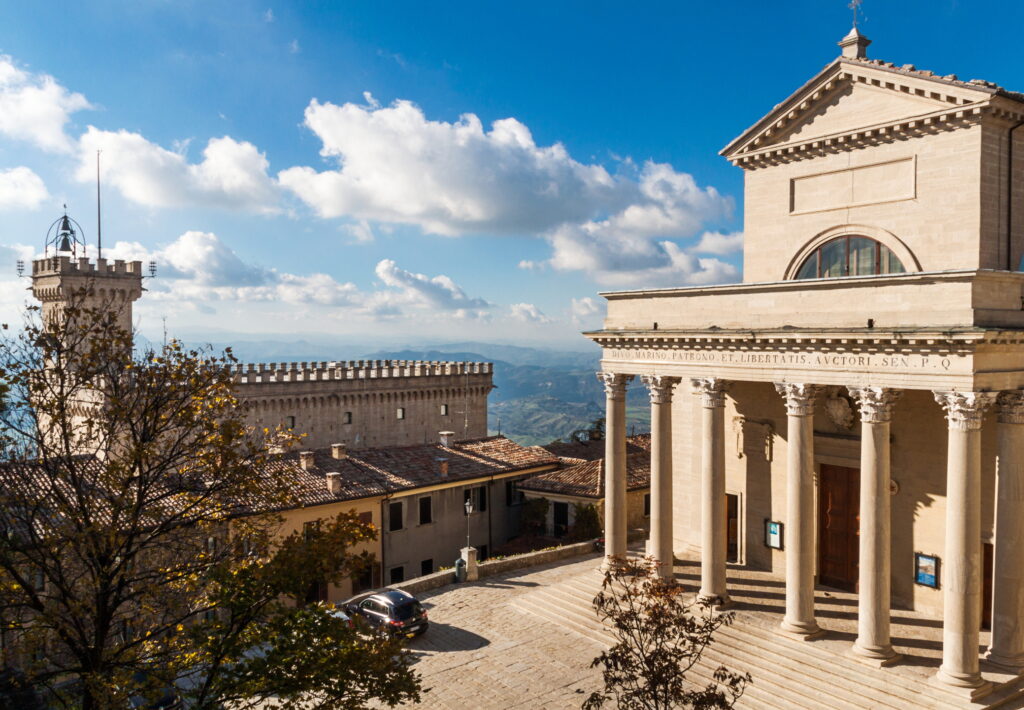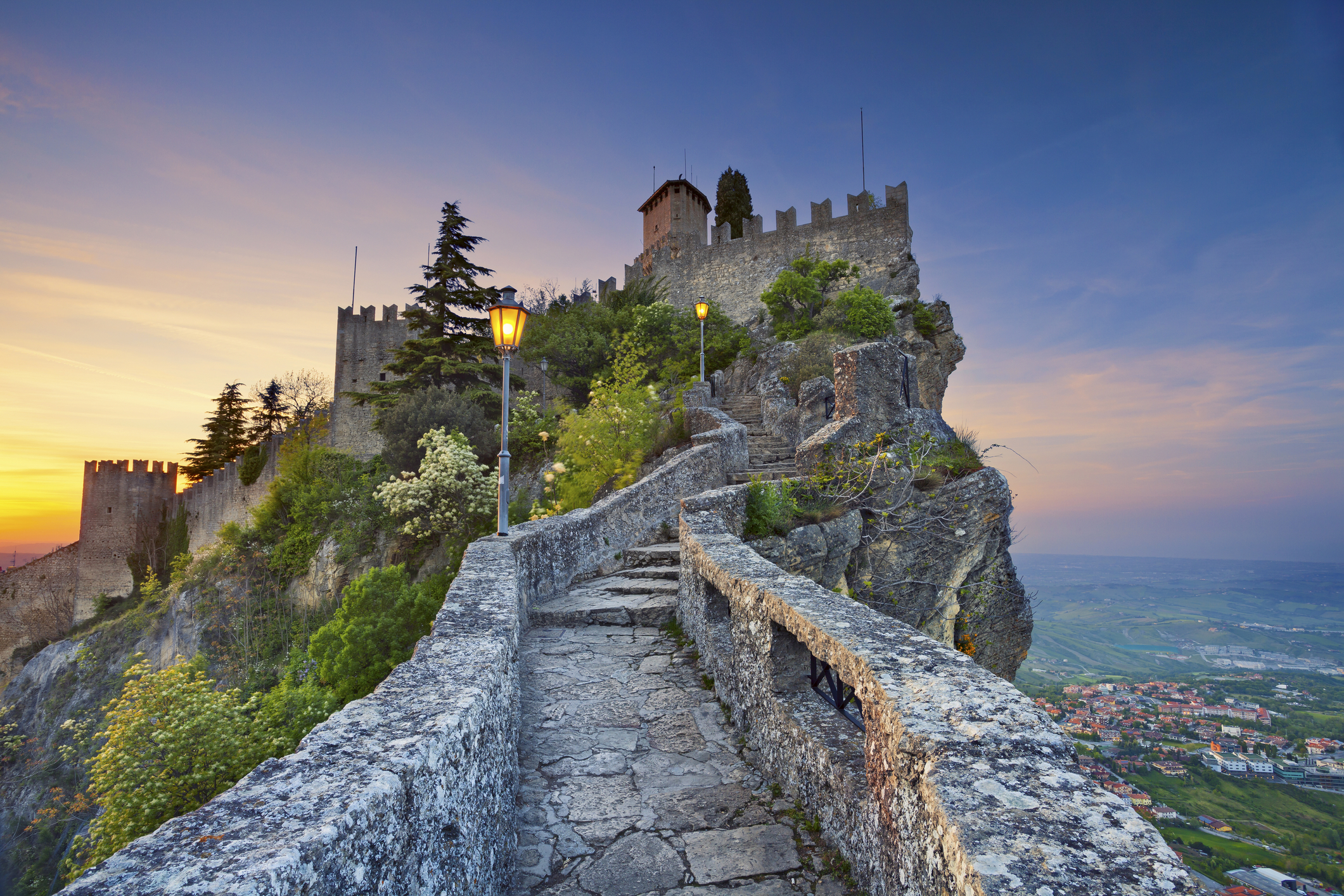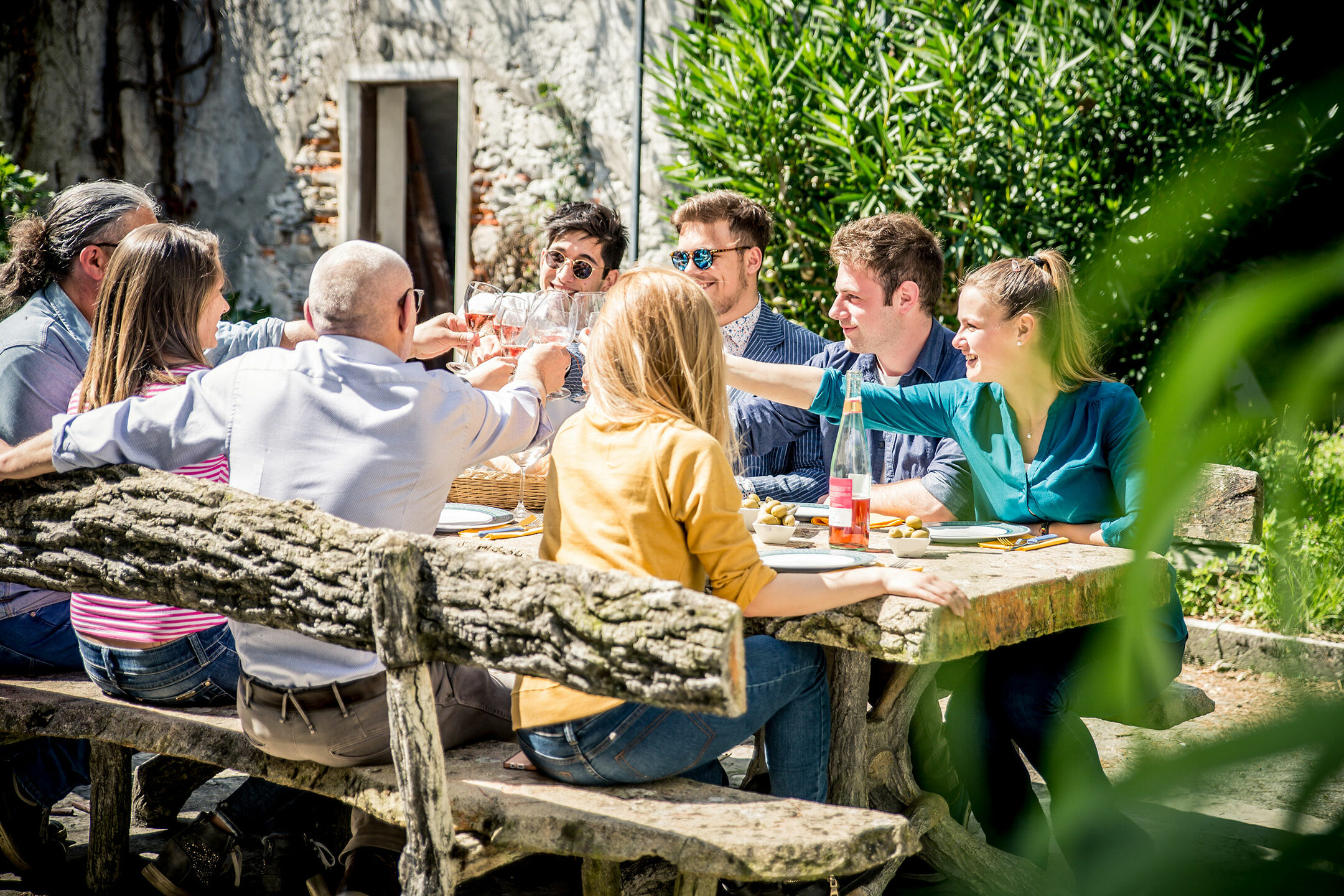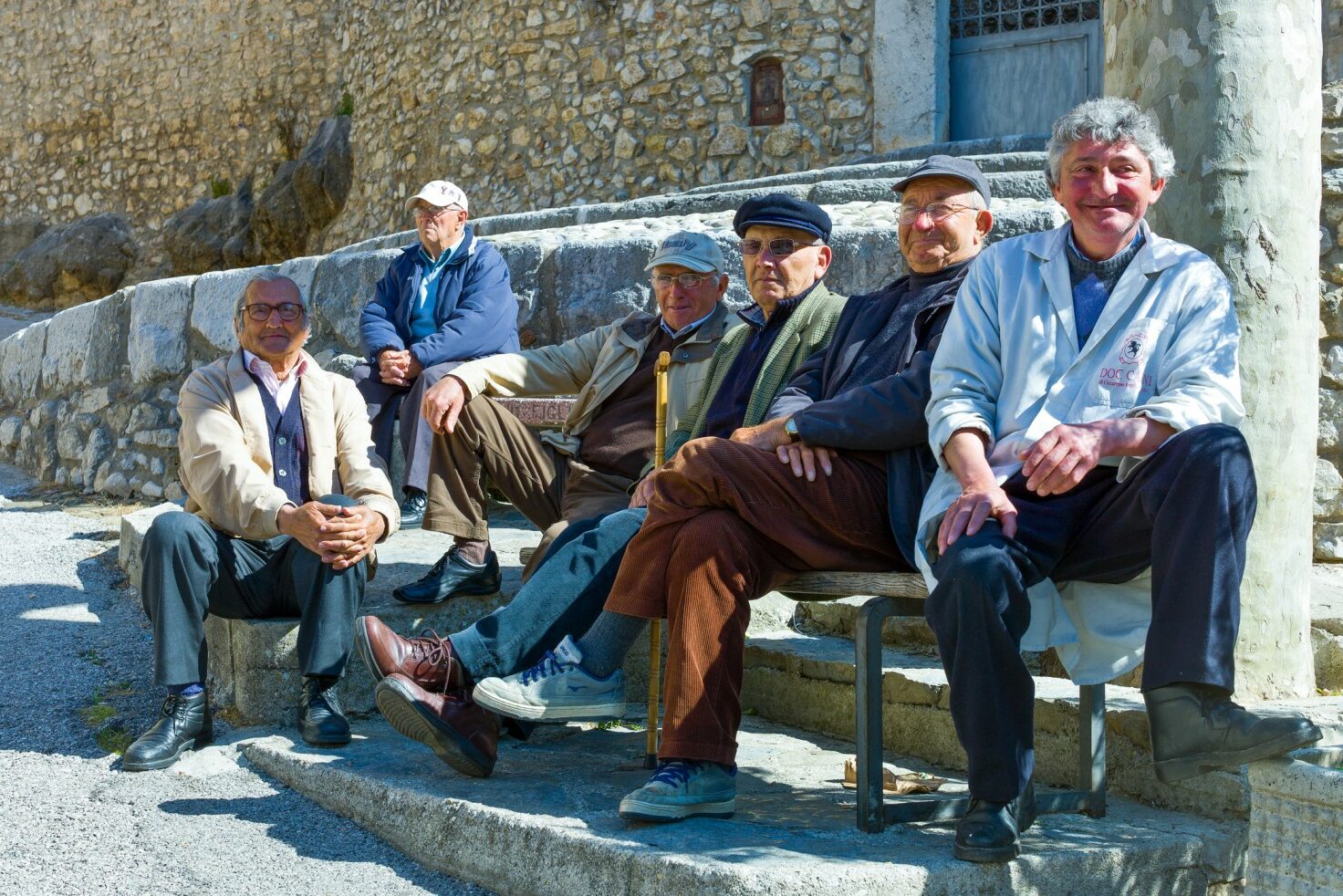There are two countries within Italy. One, the Vatican, is the smallest sovereign state in the world. The other, San Marino, is the most ancient Republic still extant.
There is something very magical about San Marino, a place which I had the pleasure to visit only once in my life, but that left a very strong impression on my then-young mind. It was like walking into a tale of wonders because I had never seen quite anything like it: perched on top of a mountain and guarded by a castle, from there you could see, almost by magic, the joyous land of Romagna below, all the way to the sea. There is something so incredible about being on top of a mountain and seeing the sea… provare per credere.
And then, there were its winding streets and tiny shops, its cobblestoned square, and the sun setting, because we were visiting late in the afternoon: memories, beautiful, cherished memories of my adolescence!
San Marino has a long and interesting history to tell, one that, as it often happens in Italy and everywhere in the world, shares some traits with legend and mythology, others with lore and spirituality. We could start from the mountain where San Marino lies, Monte Titano, or Mount Titan. Ancient beliefs tell us that it is the work of the most fearsome of all giants, the Titans, children of Saturn and first cousins of Zeus, the king of all Olympian gods. There wasn’t much love between the cousins, though, and the Titans wanted to attack him while he was asleep on Mount Olympus. To reach the skies above the mountain where Zeus lived, they began piling stones over stones. But Zeus learned about their plan and, with a mighty act of strength, hurled the giants down to the ground and back to Earth. All that remains of the infamous episode, is that pile of stones and boulders, known of course as Mount Titan.
To know the origins of the Republic itself, however, we have to look into the hagiography of the saint from whom it gets its name, San Marino. The oldest manuscript of the Vita Sancti Marini- the Life of Saint Marino – dates back to the 10th century and it is today kept at Turin’s Biblioteca Nazionale. In it, we find the life of San Marino and other tales, all important because relating to the lore of the Republic. One of the most famous legends enshrined in this piece of Medieval literature is the one of San Marino and the bear. Sometimes around 300 AD Marino, who had been living in solitude and prayer in the hills and mountains of Romagna, was summoned by the bishop of Rimini, Gaudentius. When he returned home, Marino found out his humble abode had been occupied by a bear, that had feasted on the saint’s only companion, a donkey. Marino, then, explained to the bear that his actions had caused him pain and that, to fix the wrong done, he had to become his helper. The bear, who understood the good words of the saint, accepted and took up the role of the poor donkey. A second version of the legend says the encounter happened while the saint was escaping Roman persecutions against the Christians, along with his faithful donkey. While they were traversing a forest known for the presence of dangerous robbers, Marino met the most vicious of them all, Rufus. Rufus knew well that Marino had managed to convert other criminals before him and that he was a known holy man: his aim was that of kidnapping him and asking for a ransom.

A non-the-wiser Marino, in the meanwhile, had left his donkey tied to a tree to seek water and fruits for himself and his four-legged companion. When he returned to his donkey, he found out a bear had eaten him alive. Instead of running away, the saint got closer to the bear and, while touching gently his fur, he asked him to take his donkey’s place. The bear, miraculously, became as docile as a lamb. When, shortly after, Rufus and his gang attacked the saint, the now-gentle bear scared them away, saving the saint from peril.
Saint Marino’s bear legends fit into a topos in hagiography, where saints befriend wild animals, in a beautiful metaphor of how Mankind should always respect and seek peace with other Creatures: the most famous example is, perhaps, the friendship between Saint Francis of Assisi and the wolf.
But let us go back to San Marino the country a moment: what is the connection between the Saint and the Republic? Well, it’s quite simple: Saint Marino is traditionally believed to have founded the first settlement from which the Republic was to develop. Marino had reached Mount Titan from Arbe, a small Croatian island in the Adriatic Sea, with some other faithful, with whom he had created a small community on the mountain. Soon, news of the wonders and miracles performed by Marino reached the hears of Roman matron Felicissima, who was the owner of the lands where the small community had settled. She, needless to say, wasn’t too impressed and sent her son Verissimus to chase them away from her lands; Marino felt that Verissimus’ intentions weren’t good and, fearing for the life of his people, he prayed to God asking for help. At that very moment, Verissimus fell from his horse, unable to speak or move. A distraught and terrified Felicissima ran to the Saint, begging him to save her son: he could ask anything in change, and she was to grant it. Marino, with humbleness, said the only thing he wanted was that herself and her son became Christians and get baptized. Felicissima agreed, and Verissimus’ health was restored. The Roman woman and her family converted to Christianity and also gifted Monte Titano to Marino and his community. Saint Marino was to live there, with his people, until the day of his death, on the 3rd of September of an unknown year, perhaps 336 AD.
The 3rd of September is, still today, an important day in the Republic of San Marino, to celebrate its freedom and the beginning of its centuries-long history.

































